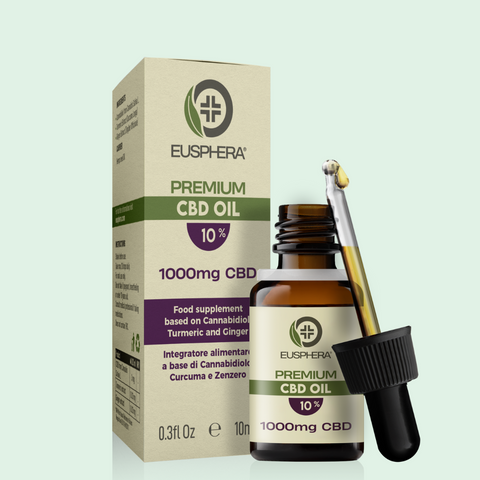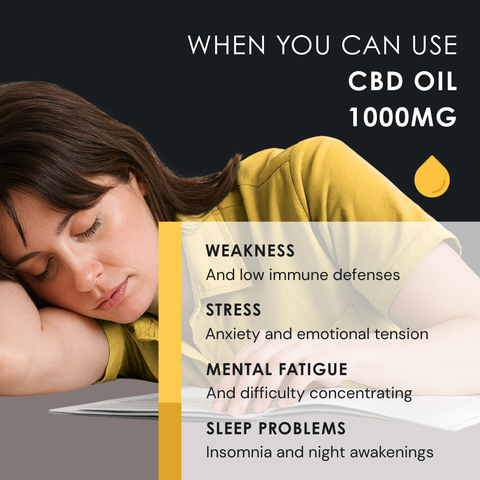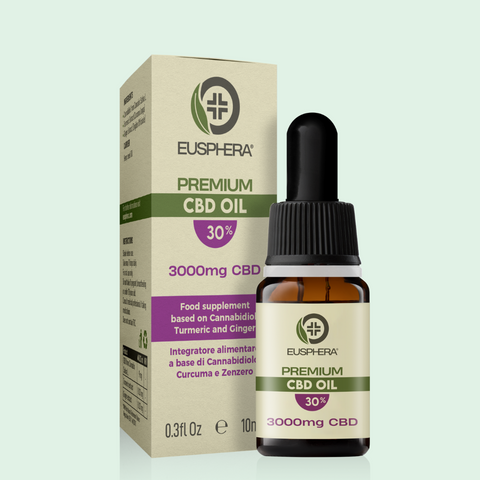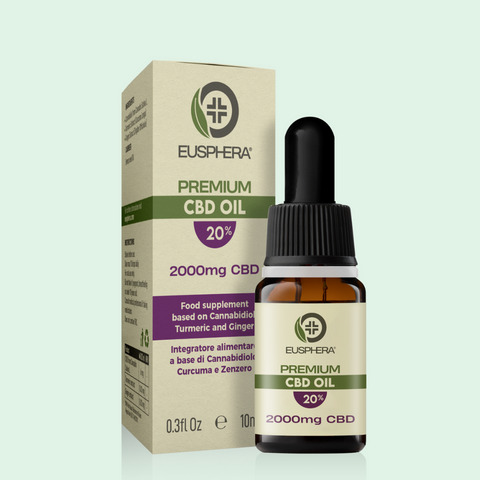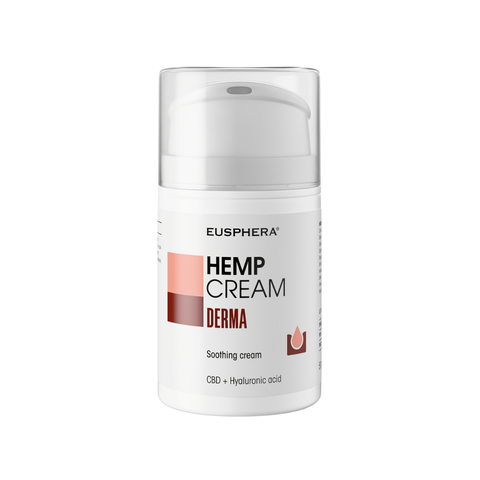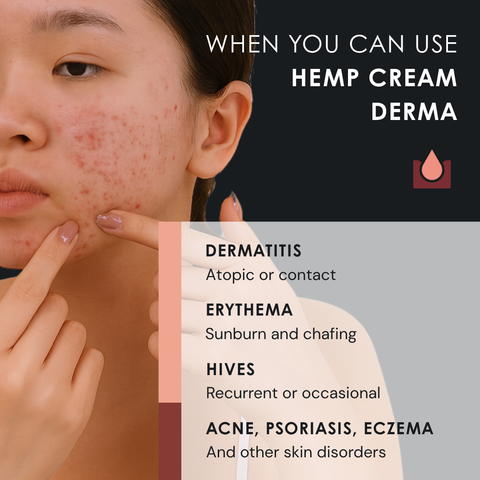From 2025, the Italian legal framework regarding hemp flowers has changed significantly: inflorescences (including “light” varieties) and products containing them are no longer covered under industrial hemp regulations and now fall under narcotics laws. In practice, production, sale, distribution, shipping, and consumption of products based on inflorescences are prohibited and penalized. At the same time, lawful use of the supply chain remain possible (seeds, fibers, industrial applications) as well as the use of CBD in cosmetics, provided it complies with European regulations and contains no detectable THC.
In the following sections, we will examine which products can be used, which should be avoided, and how to recognize reliable and legally compliant products, so you can safely choose CBD-based products.
What Are Hemp Inflorescences and Flowers
Let’s take a look at some definitions.
In botany:
· Hemp inflorescences are the female flowers of Cannabis sativa L., rich in trichomes that concentrate cannabinoids, terpenes, and flavonoids;
· The “hemp flower” refers to the single flower or the dried top;
· Instead, “Industrial hemp” refers to the cultivation of certified varieties intended for non-narcotic uses, primarily seeds and fibers.
Practical differences? Inflorescences are no longer part of the products legally available to the public; leaves, which are less rich in trichomes, can be used as raw material in permitted processes; seeds – free of psychoactive components – go to food and feed (oil and flour), while fibers and hemp hurds (canapulo) are used in textiles, paper, bio-construction, and biocomposites.
Law 242/2016, amended by the 2025 Security Decree, now strictly defines these uses and explicitly excludes inflorescences from the scope of industrial hemp.
Therefore, the answer to the question, “how are hemp inflorescences used?” is simple: in no way. Only processing of inflorescences for agricultural seed production is allowed, not retail sale. The legal part of the supply chain mainly concerns seeds and fibers, as well as compliant technical uses.
Properties of Hemp Flowers
When discussing the properties of hemp flowers, scientific research does not focus on the “flower” itself as a product for direct use, but on purified extracts—particularly CBD—isolated from the flowers or other parts of the plant and studied in laboratory or clinical settings.
· Anti-inflammatory pathways and oxidative stress
The most consistent data show that CBD can modulate inflammatory and oxidative processes by acting on cytokines and redox markers. These effects have been observed in preclinical models and confirmed in small human studies, but they still need to be validated in larger trials.
· Anxiety and sleep
Controlled experiments have documented a transient reduction in anxiety in acute stress situations, while more recent reviews and meta-analyses report heterogeneous results depending on dosages, populations, and study designs.
· Neuroprotective effect
Several reviews describe plausible mechanisms of neuronal protection—including modulation of neuroinflammation, stabilization of the blood-brain barrier, and reduction of oxidative stress. Early signals in neurodegenerative diseases are promising, but clinical translation requires more robust evidence.
· Spasticity and pain
Evidence is more concrete regarding spasticity: in Europe, after failure of other therapies, the use of a THC:CBD oromucosal spray for 4 weeks is authorized (with a medical prescription), recommended by NICE guidelines for moderate-to-severe spasticity in multiple sclerosis. For chronic pain, systematic reviews indicate modest and variable benefits of non-inhaled cannabinoids, which should always be considered in a risk/benefit assessment.
The use of CBD as a food or supplement is still under evaluation by the EU. According to EFSA (European Food Safety Authority), at present CBD cannot be considered a “safe” novel food due to significant data gaps (for example, effects on the liver, drug interactions, and reproduction).
Hemp Flowers and CBD-Based Products: Differences and What the 2025 Law Says
When discussing hemp and CBD, it is important to distinguish between hemp flowers (inflorescences) and products based on CBD extracts.
· Hemp flowers (inflorescences)
The tops of the plant contain a natural mixture of cannabinoids, including CBD but also THC, with variable concentrations. This variability makes it difficult to control content and guarantee legal compliance.
· CBD-based products (cosmetics, supplements, medicines)
Purified extracts can be standardized, with controlled concentrations and free of detectable THC. They must comply with specific regulations: for example, EU Cosmetic Regulation 1223/2009 for cosmetics. Since 2021, the European CosIng database also includes naturally derived CBD among allowed cosmetic ingredients, provided it complies with other applicable rules.
The New Italian Law on Inflorescences
With Decree-Law April 11, 2025, No. 48 (“Security Decree”), Art. 18, Italy has redefined the boundaries of industrial hemp.
Under the new provisions:
- Law 242/2016 no longer applies to products made of hemp inflorescences, nor to those containing them (even dried or ground), including extracts, resins, and oils;
- Import, processing, possession, commerce, distribution, transport, shipping, delivery, and retail sale are prohibited;
- The only exception concerns processing inflorescences exclusively for agricultural seed production.
Violations fall under the Consolidated Law on Narcotics (DPR 309/1990):
· Sale or trafficking constitutes a criminal offense (Art. 73);
· Possession for personal use is not a crime, but an administrative offense (Art. 75), with possible sanctions such as suspension of driving license, passport, or firearms license, at the Prefect’s discretion.
It follows that smoking hemp flowers or using them for tea is not lawful; similarly, content or sales related to recipes with hemp flowers have no legal space. If you see “buy hemp flowers” or “purchase hemp flowers” online, it should be remembered that offering and transferring such products exposes one to criminal liability; and regarding the question “what happens if I buy dried hemp flowers?”, the answer for the buyer is that an administrative procedure for personal use (Art. 75) may be initiated if possession is personal, subject to seizure and verification.
Practical Advice for Those Who Want to Use Legal CBD Products
Today, choosing wisely means looking at compliant products (especially cosmetics/topicals) and brands transparent about quality.
How to Read CBD Product Labels
· Concentration: indicates mg of CBD per unit/volume; in cosmetics, it is a functional ingredient, not a medicine;
· THC: must be non-detectable (CoA with LOQ specified);
· Certifications and CoA: request Certificates of Analysis from third-party labs, including batch, methods, and results for cannabinoids, residues, metals;
· Ingredients: prefer a clear INCI (Cannabidiol, Cannabis sativa leaf extract), avoiding references to extracts from inflorescences not allowed in Italy.
Be cautious with hemp flower essential oil: essential oils obtained from inflorescences fall under “derived products” that are prohibited; therefore, they cannot be marketed in Italy. Instead, focus on compliant cosmetics and hemp seed oils.
Where to buy safe products
● Reliable brands and traceability: look for companies that publish the supply chain, batches, and third-party tests;
● Independent laboratories: prefer products with ISO/IEC 17025 analyses;
● Official channels: be cautious of marketplaces or ads offering flowers or extracts from the tops. For examples of transparency on production and testing, see Eusphera collections.
Finally, remember to avoid unauthorized products. In cosmetics, use is allowed only if compliant with regulations and without detectable THC.
